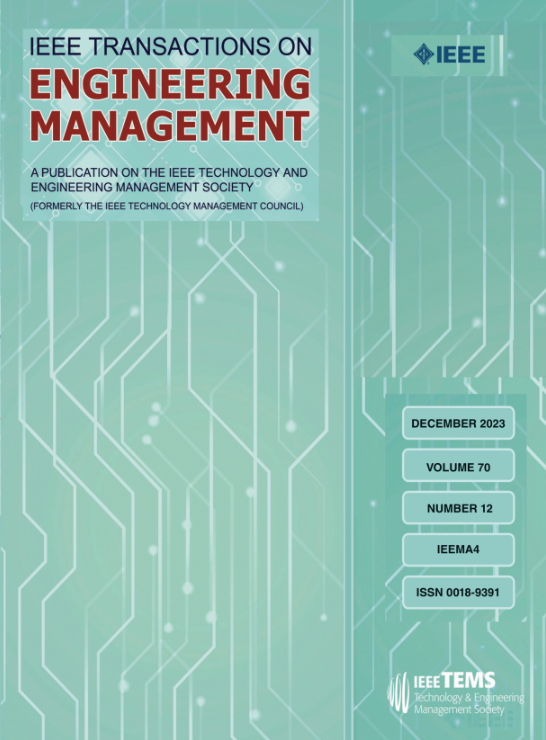Driving Toward Sustainable Development Goals (SDGs) in the Ready-Made Garments (RMGs) Sector: The Role of Digital Capabilities and Operational Transparency
IF 5.2
3区 管理学
Q1 BUSINESS
引用次数: 0
Abstract
In today's digital transformation era, the importance of developing dynamic capabilities has significantly increased. However, the literature has not fully explored the significance of dynamic capabilities in sustainable development. Hence, in this article, we examine the impact of digital capabilities (DCs) and operational transparency (OT) on achieving sustainable development goals (SDGs). Drawing upon the dynamic capability view (DCV), we analyze the impact of DC on decent work conditions (DWCs), reduced inequalities (RIs), responsible consumption and production (RCP), and reduced carbon footprint (RCF) through the mediating effect of OT. We conduct 14 semistructured interviews to understand how developing dynamic capabilities can drive organizations toward achieving SDGs. Subsequently, we apply a cross-sectional survey to gather data from 257 respondents in the Bangladeshi ready-made garments industry. We use the variance-based structural equation modeling technique to test our research hypotheses. Our findings suggest that DC significantly enhances OT and that OT can positively impact DWC, RI, RCP, and RCF. Additionally, we find that OT partially mediates the link between DC and SDGs. Our study provides valuable insights into the DCV, offering a better theoretical understanding of the role of DC in enhancing OT to achieve SDGs. It can also encourage firms to take advantage of emerging digital technologies and the trend toward digitalization by demonstrating a strong commitment to adopting new advanced technologies, developing dynamic capabilities, and striving to achieve SDGs.推动成衣(RMGs)行业实现可持续发展目标(SDGs):数字能力和业务透明度的作用
在当今的数字化转型时代,发展动态能力的重要性大大提高。然而,文献尚未充分探讨动态能力在可持续发展中的意义。因此,在本文中,我们将研究数字化能力(DCs)和运营透明度(OT)对实现可持续发展目标(SDGs)的影响。借鉴动态能力观点(DCV),我们通过运营透明度的中介效应,分析了数字能力对体面工作条件(DWCs)、减少不平等(RIs)、负责任的消费和生产(RCP)以及减少碳足迹(RCF)的影响。我们进行了 14 次半结构式访谈,以了解发展动态能力如何推动组织实现可持续发展目标。随后,我们采用横截面调查,收集了孟加拉国成衣行业 257 名受访者的数据。我们使用基于方差的结构方程模型技术来检验我们的研究假设。我们的研究结果表明,DC 能显著增强 OT,而 OT 能对 DWC、RI、RCP 和 RCF 产生积极影响。此外,我们还发现,OT 在一定程度上促进了 DC 与 SDGs 之间的联系。我们的研究为 DCV 提供了有价值的见解,从理论上更好地理解了 DC 在增强 OT 以实现可持续发展目标方面的作用。它还可以鼓励企业利用新兴数字技术和数字化趋势,展示出采用新的先进技术、发展动态能力和努力实现可持续发展目标的坚定决心。
本文章由计算机程序翻译,如有差异,请以英文原文为准。
求助全文
约1分钟内获得全文
求助全文
来源期刊

IEEE Transactions on Engineering Management
管理科学-工程:工业
CiteScore
10.30
自引率
19.00%
发文量
604
审稿时长
5.3 months
期刊介绍:
Management of technical functions such as research, development, and engineering in industry, government, university, and other settings. Emphasis is on studies carried on within an organization to help in decision making or policy formation for RD&E.
 求助内容:
求助内容: 应助结果提醒方式:
应助结果提醒方式:


